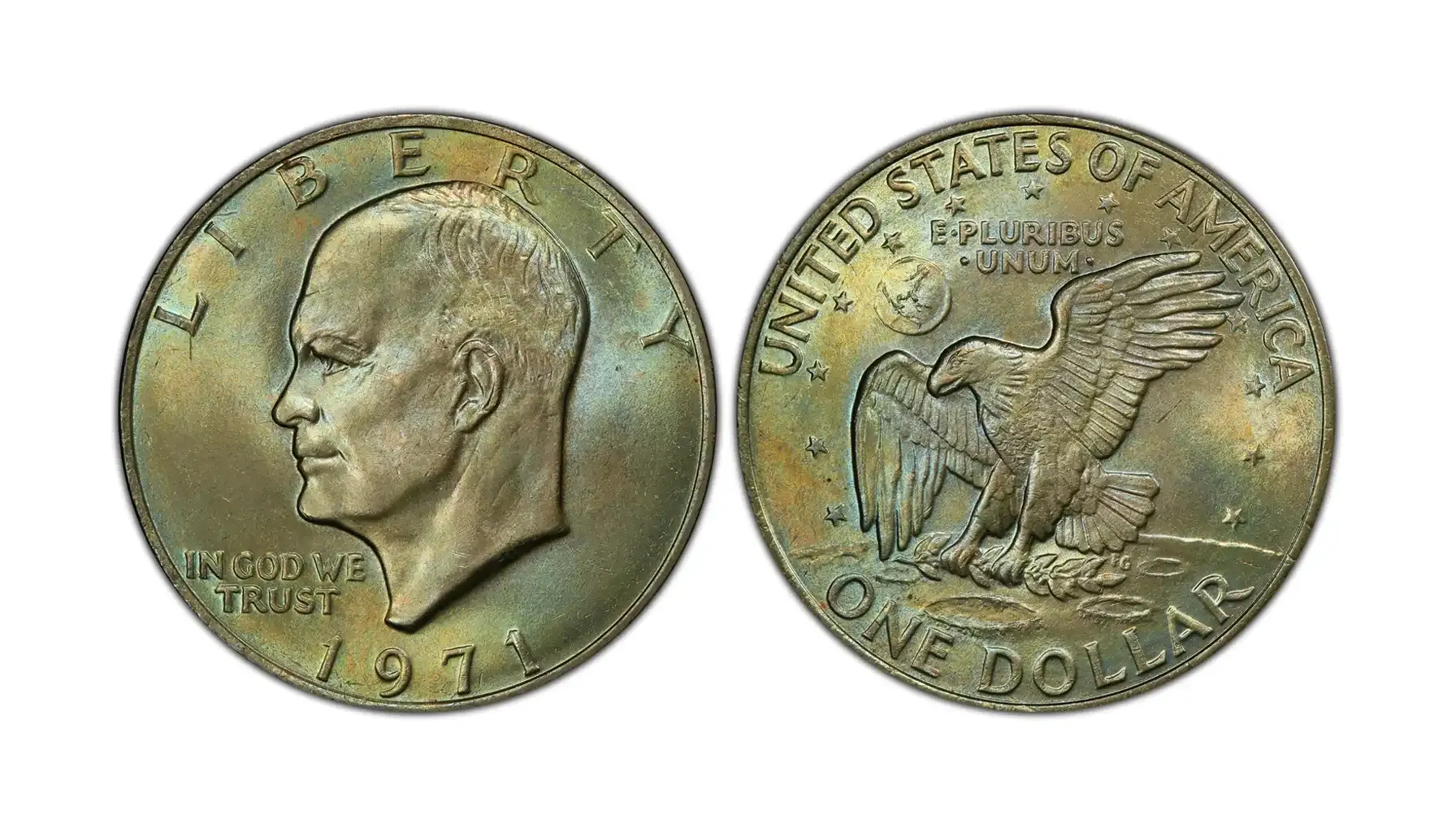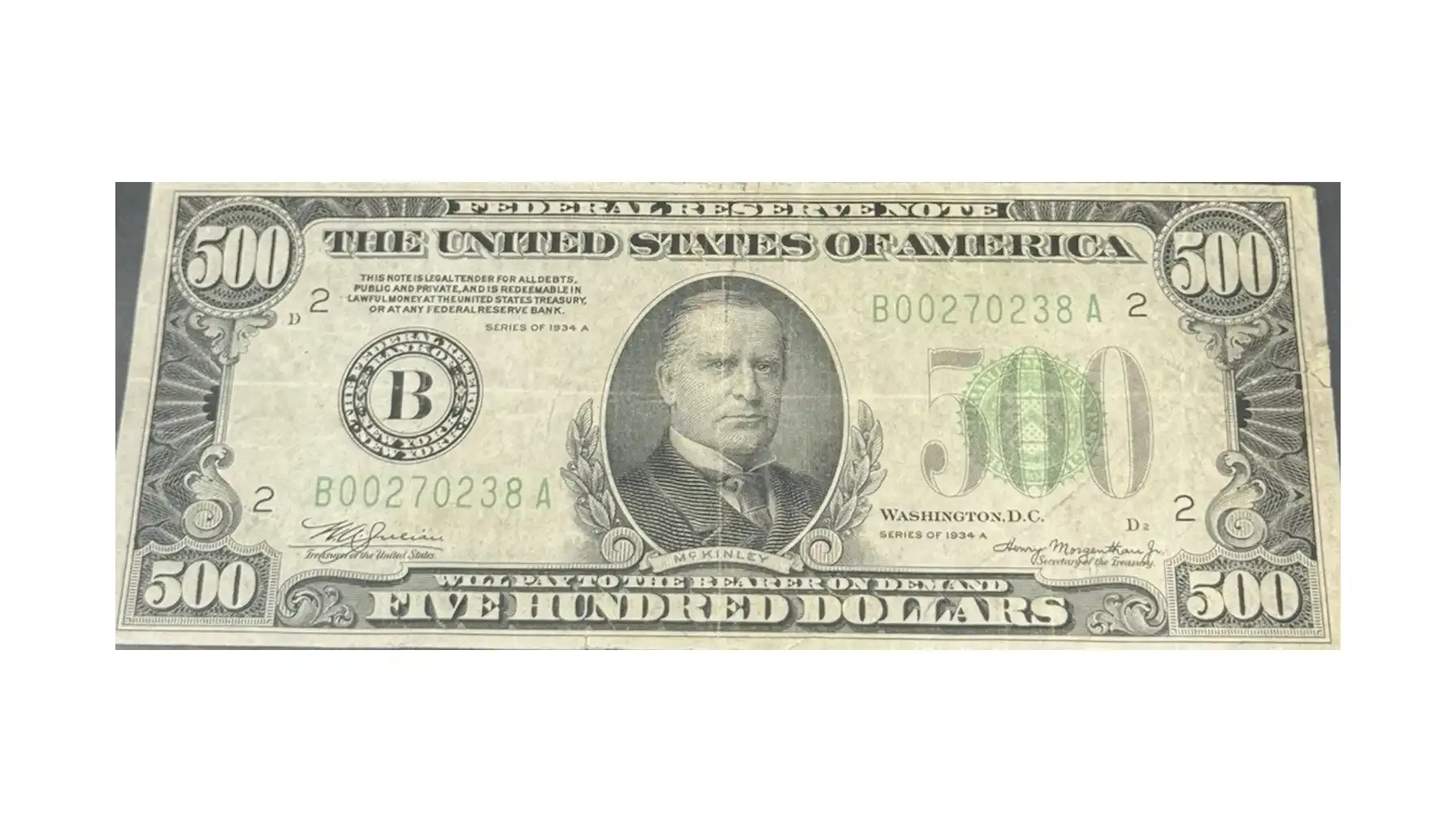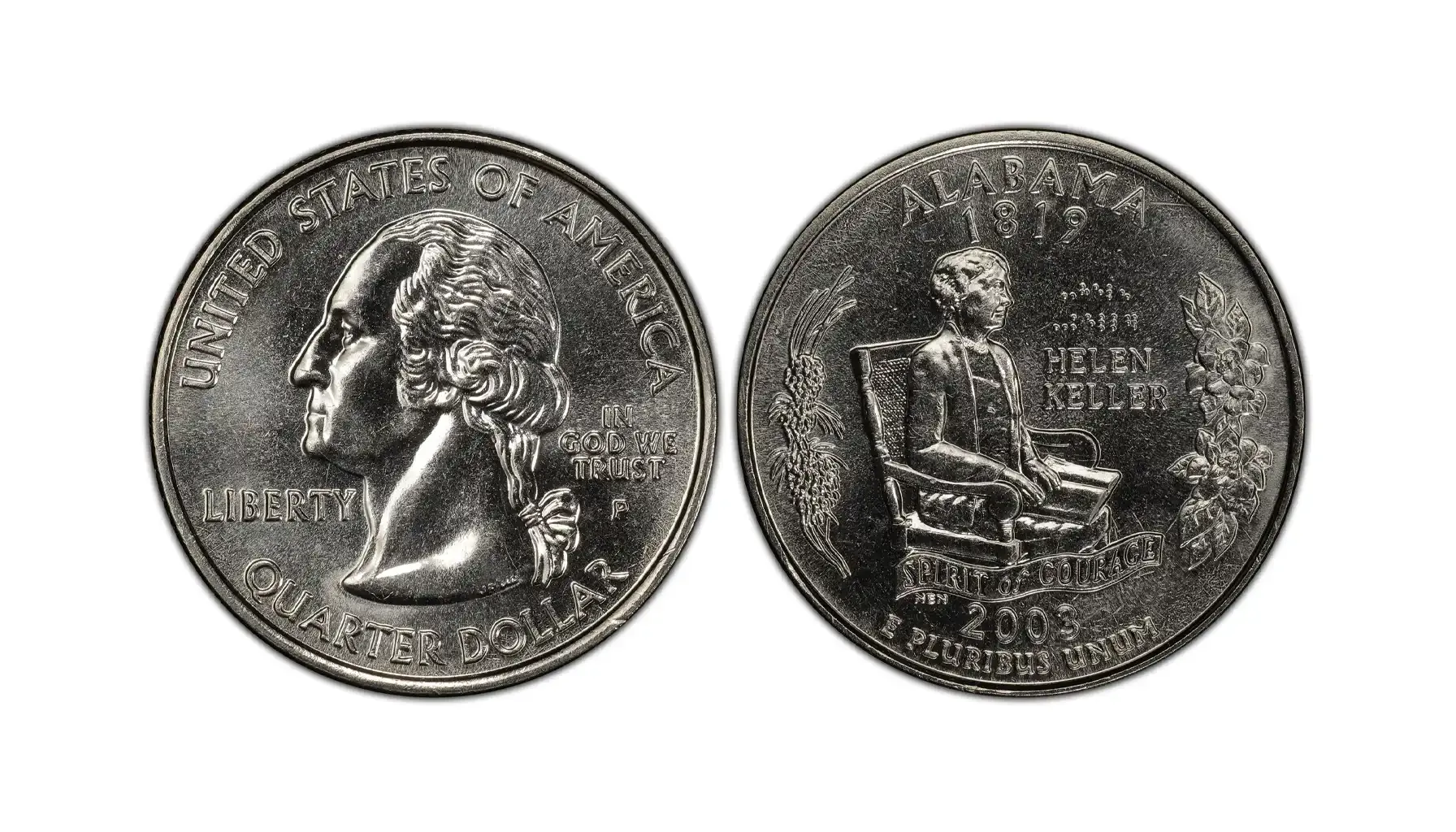Contents:
- Introduction to the 1944 Walking Liberty Half Dollar
- 1944-D Walking Liberty Half Dollar: Why It’s Special
- How Much Is a 1944 Half Dollar Worth Today?
- Key Features of the 1944 Liberty Half Dollar Design
- 1944 Half Dollar Errors and Varieties to Watch For
- Silver Value: What Is a 1944 Half Dollar Worth in Melt?
- Where Is the Mint Mark on a 1944 Half Dollar?
- Final Thoughts: Should You Collect the 1944 Walking Liberty Half Dollar?
The 1944 Walking Liberty Half Dollar stands out as a popular collectible. Made of 90% silver, its value mostly depends on its condition and mint mark. Most circulated coins sell for $11 to $25, while coins in better shape can bring $27 to $85 or more. Many collectors admire this coin design for its detail and symbolism, which set it apart from later issues like the Franklin half dollar.
Collectors look for mint marks from the Philadelphia Mint, Denver, or San Francisco. Coins in top condition, especially those graded MS67 or higher, can fetch thousands of dollars at auction. The obverse features Liberty walking forward with a flowing flag, while the reverse includes an eagle perched with wings raised, standing near laurel and oak branches.
Today, you can easily identify and check the value of your half dollar using a free coin identifier app. These apps help you quickly identify coins and check coin value without any cost. Whether you are new to collecting or experienced, a free coin identifier app offers a simple and reliable way to learn more about your coins and their worth.

Introduction to the 1944 Walking Liberty Half Dollar
The 1944 half dollar stands out as a classic piece of American history. Minted during World War II, this coin reflects a time of strength and hope in the United States. The design, created by Adolph A. Weinman, features Lady Liberty walking confidently toward the sunrise.
Collectors admire the 1944 half dollar coin for its beauty and story. Here are four quick facts about this famous coin:
The coin is made of 90% silver and 10% copper.
It weighs 12.5 grams and measures 30.6 mm in diameter.
Over 46 million coins were produced in 1944.
The obverse shows Lady Liberty; the reverse displays a strong eagle.
The 1944 US half dollar and its walking liberty half dollar 1944 design remain favorites among collectors. These coins symbolize American resilience and artistic achievement, making them valuable to anyone interested in U.S. coinage.
1944-D Walking Liberty Half Dollar: Why It’s Special
The 1944-D Walking Liberty Half Dollar comes from the Denver Mint and stands out for its lower mintage compared to other 1944 issues. The Denver Mint produced just under 9.8 million coins, making this version less common than its Philadelphia and San Francisco counterparts. Collectors often seek out the 1944-D walking liberty half dollar because of its relative scarcity and unique mint mark.
This coin is also special for its value in the numismatic market. The 1944 D walking liberty half dollar value ranges from about $15 in circulated condition to thousands of dollars for rare, uncirculated examples. High-grade coins with the "D" mint mark can sell for impressive prices, especially those with sharp details and strong luster.
Collectors appreciate the 1944 liberty half dollar not just for its silver content but also for its historical significance. The liberty half dollar 1944 from Denver remains a favorite among enthusiasts who want a piece of World War II-era history. Details about the coin’s background and collector value can be found in the 1942 Walking Liberty Half Dollar Value article, which highlights what makes these coins special to collectors.
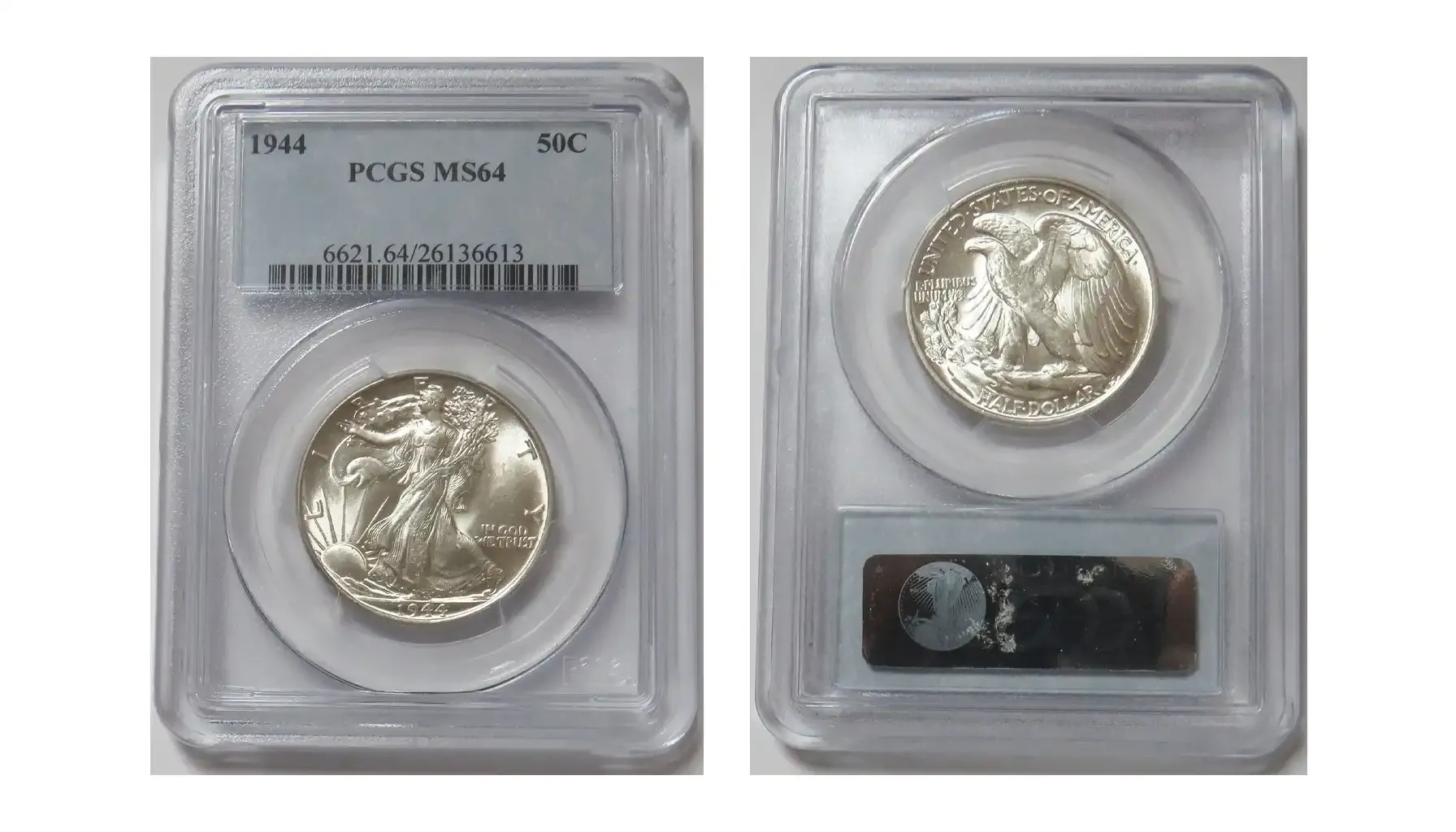
How Much Is a 1944 Half Dollar Worth Today?
Collectors often ask, how much is a 1944 half dollar worth, and the answer depends on a few important factors. These include the coin’s condition, mint mark, and whether it is a regular circulation piece or a proof. Coins that show heavy wear and scratches tend to have lower value, often close to melt price. However, coins in mint state—especially those from the Denver or San Francisco mints—can sell for much higher amounts.
The 1944 half dollar value today ranges from around $15 for lower-grade circulated coins to well over $2,000 for pristine examples in MS67 or better. While most coins were struck in Philadelphia, the half dollar 1944 value also climbs based on rarity and eye appeal. Proof-like finishes, sharp strikes, and full details often attract serious attention from grading services and buyers alike.
Mint Mark | Grade Range | Estimated Value |
No Mint (P) | Good – Fine | $15 – $30 |
No Mint (P) | XF – AU | $35 – $75 |
No Mint (P) | MS60 – MS66 | $100 – $500 |
D (Denver) | Good – Fine | $18 – $40 |
D (Denver) | XF – AU | $45 – $120 |
D (Denver) | MS60 – MS67 | $150 – $2,000+ |
S (San Francisco) | Good – Fine | $20 – $50 |
S (San Francisco) | XF – AU | $60 – $150 |
S (San Francisco) | MS60 – MS66 | $175 – $1,600+ |
4 Grading Terms Every Collector Should Know:
VG (Very Good) – Coin shows wear but major details are visible.
XF (Extremely Fine) – Light wear, strong detail on most of the design.
MS (Mint State) – Uncirculated coin with no signs of wear.
PR (Proof) – Special high-detail coins made for collectors, often with mirrored surfaces.
Key Features of the 1944 Liberty Half Dollar Design
The 1944 Liberty half dollar is part of the iconic Walking Liberty series. Its design stands out as one of the most artistic in American coinage. Adolph A. Weinman, the designer, created a powerful image that reflected both national pride and hope during wartime. The obverse shows Liberty striding toward the sunrise, draped in the American flag.
On the reverse, the bald eagle stands perched on a rock with its wings outstretched. This dramatic design gives the liberty walking half dollar 1944 a unique and memorable look. Collectors admire its beauty and the deep symbolism found in every detail.
The half dollar coin 1944 also displays key inscriptions like "Liberty," "In God We Trust," and the year of minting. The overall appearance of the 1944 Walking Liberty half dollar remains highly appreciated for its balance of realism and symbolism, making it a favorite among U.S. silver coin collectors.
Here are four symbolic elements found on the half dollar coin 1944 and 1944 walking liberty half dollar:
Lady Liberty: Represents freedom and hope for a new day.
Olive branch: Symbolizes peace and goodwill.
Eagle: Stands for strength, bravery, and national pride.
Rising sun: Marks new beginnings and optimism for the future
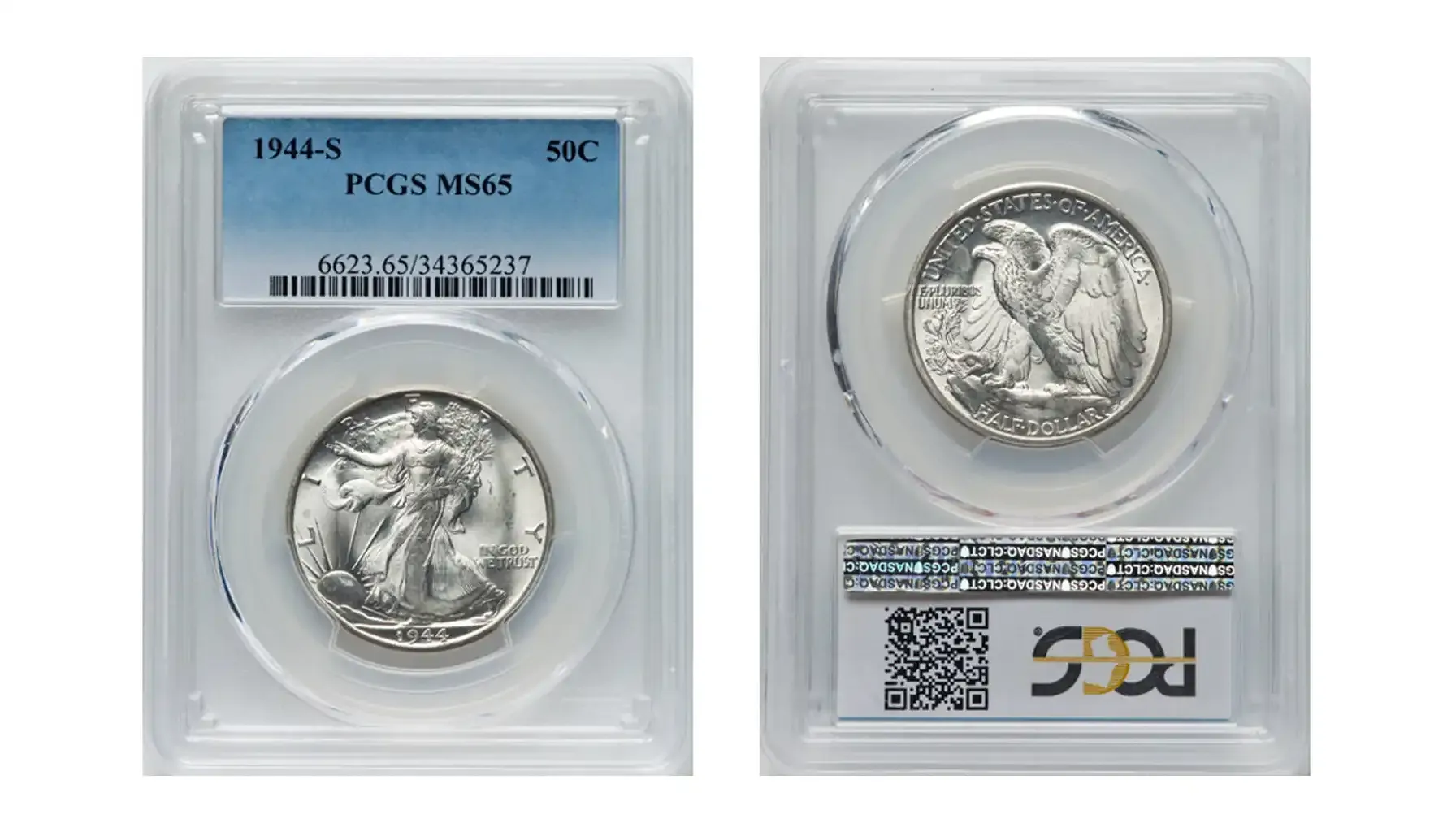
1944 Half Dollar Errors and Varieties to Watch For
Error coins continue to attract collectors for their rarity, historical quirks, and investment potential. The 1944 Walking Liberty half dollar includes several recognized error types, and each contributes its own level of rarity and value. Understanding these errors can help collectors identify undervalued pieces and make more informed purchases. Below are the key categories of errors collectors should know, along with illustrations where applicable.
Doubled Die Errors

Among the most sought-after errors are doubled die varieties. These occur when a misalignment happens during the die-hubbing process, causing design elements such as the date or inscriptions (like "LIBERTY" or "IN GOD WE TRUST") to appear doubled. On the 1944 half dollar, strong obverse doubling is especially desirable. While some examples show subtle shifts, others present dramatic duplication, increasing their value significantly—especially when verified by a grading service. Doubling often appears most clearly in the date and lettering near the coin's rim.
Checklist for Collectors:
Inspect date and rim lettering for doubling
Use magnification tools for subtle varieties
Look for verification by PCGS or NGC
Compare with reference images from certified examples
No Mint Mark Varieties

Philadelphia struck the 1944 Walking Liberty half dollar without a mint mark. While this is standard, some specimens from this mint display die polishing lines, filled dies, or weak strikes. These small anomalies often arise from worn or overused dies and may create unique varieties recognized by advanced collectors. Careful inspection under magnification can reveal these subtle die characteristics that make the coin stand out from typical strikes.
Checklist for Collectors:
Confirm absence of mint mark under Liberty’s tail
Examine coin surface for over-polished areas
Detect weak or faded strike details
Note any unusual texture or missing features
Planchet Errors

The 1944 silver half dollar occasionally shows planchet flaws. These occur before striking and include clipped planchets (a curved or straight portion is missing), lamination issues (where metal flakes away), and surface cracks. These irregularities do not occur frequently, making each coin a one-of-a-kind collectible. Some coins may also show incomplete metal bonding, leaving rough or uneven surfaces. Collectors value such coins not only for their rarity but also for their visual uniqueness.
Checklist for Collectors:
Look for missing metal portions (clipped planchets)
Inspect for flaking or peeling (lamination)
Identify hairline cracks or odd ridges
Validate errors with professional grading services
Strike-Through Errors
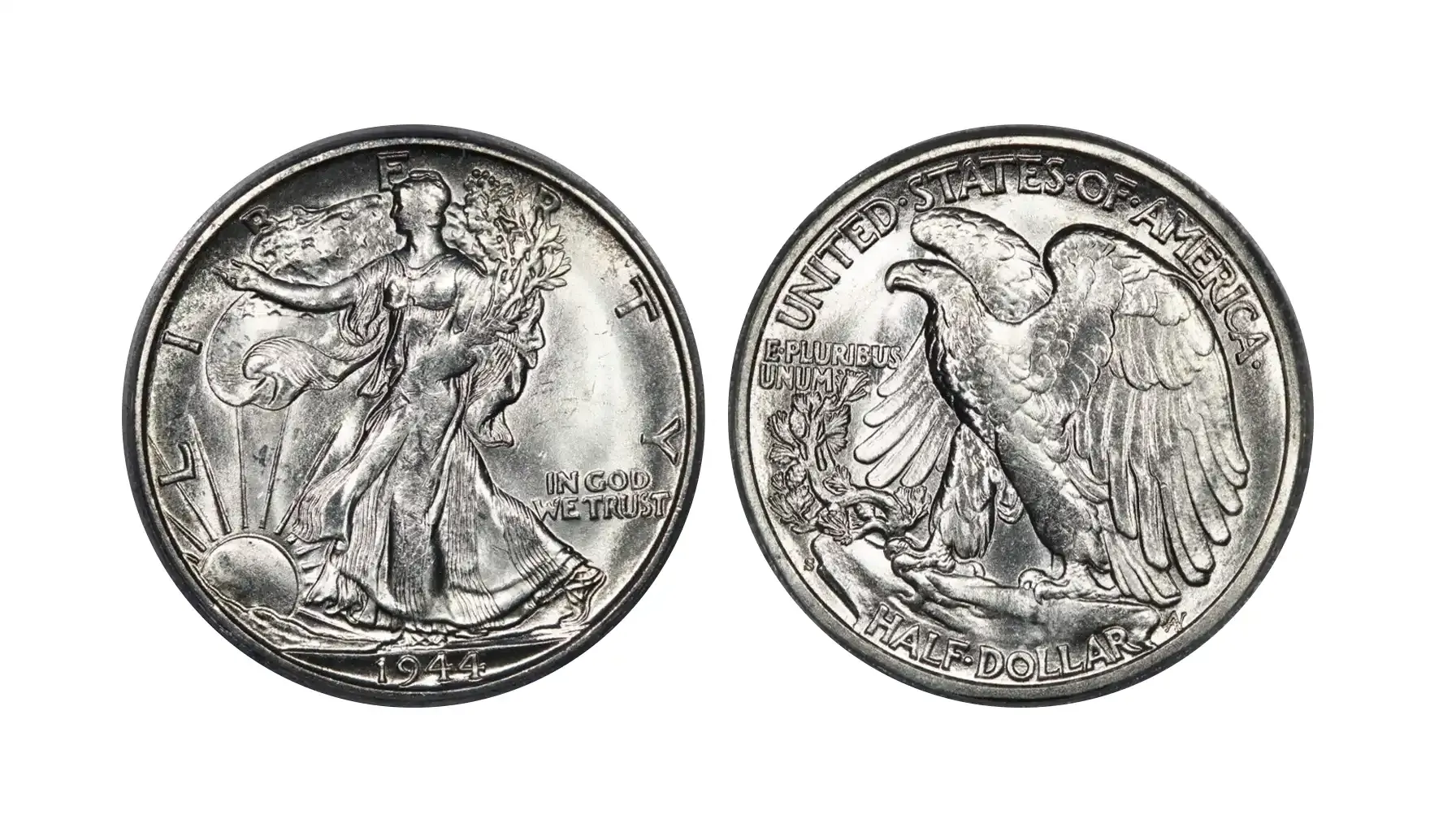
Less common but notable are strike-through errors, which happen when foreign objects like cloth, thread, or grease interfere during striking. These leave textured impressions or partial design losses on the coin’s surface. The resulting image often appears recessed and rough. Depending on placement and clarity, these errors can add considerable value, particularly if they affect central design elements or important inscriptions.
Checklist for Collectors:
Scan for recessed textures or fabric patterns
Look at high points of design for inconsistencies
Use side lighting to reveal subtle impressions
Reference known strike-through examples
Silver Value: What Is a 1944 Half Dollar Worth in Melt?
Collectors and investors often seek the 1944 silver half dollar for its metal content. Each coin contains 90% silver, which equals about 0.3617 troy ounces of pure silver. To find the melt value, multiply that weight by the current market price of silver. This gives you a reliable baseline, even if the coin’s condition is not ideal.
While numismatic value can vary, the 1944 silver half dollar value in melt terms depends entirely on silver spot prices. For example, if silver trades at $25 per ounce, the melt value equals around $9. This base value helps investors decide whether to keep the coin or sell it for its silver content.
The 1944 silver half dollar coin value may also exceed melt price when the coin has collector appeal. Higher grades, unique toning, or errors can lift its worth beyond bullion pricing, making it important to factor in both metal and market demand.
Silver Price per Ounce | Melt Value (90% Silver Content) |
$20 | $7.23 |
$25 | $9.04 |
$30 | $10.85 |
$35 | $12.66 |
Where Is the Mint Mark on a 1944 Half Dollar?
The 1944 half dollar was minted at three locations: Philadelphia, Denver, and San Francisco. To identify the mint origin of your coin, you need to look at the mint mark, which can affect both scarcity and value.
Collectors often ask: where is the mint mark on a 1944 half dollar? You can find it on the reverse, just below the word "Eagle" and above the rim, near the edge on the left side of the coin. This small letter—“D” for Denver or “S” for San Francisco—can raise the value of a 1944 half dollar, especially if the coin is in excellent condition. Coins from Philadelphia do not carry a mint mark.
Mint Mark Quick Facts:
D = Minted in Denver (higher value in higher grades)
S = Minted in San Francisco (lower mintage than Denver)
No Mint Mark = Minted in Philadelphia (most common)
Mint mark location = Reverse side, left of the eagle’s tail
Understanding the mint mark can help you answer the common question: what is a 1944 half dollar worth? Knowing its origin is key to identifying rarity and estimating the value of a 1944 half dollar more accurately.
Final Thoughts: Should You Collect the 1944 Walking Liberty Half Dollar?
The 1944 Walking Liberty half dollar value attracts many collectors. This coin carries historical importance and includes 90 percent silver. Circulated coins hold value above face. Collectors pay higher prices for uncirculated pieces in strong condition.
To protect the value of a 1944 half dollar, use a safe storage holder. Do not clean the coin because it lowers the price. Coins with natural surfaces and light wear often sell for more. The 1944 half dollar worth collecting for its design, history, and silver content.
The walking liberty coin displays symbolic branches of laurel that represent peace and strength. Among the many designs featuring national pride, this coin reflects the values of the United States of America. It holds a special place among coins of the United States for its art and silver composition.

